- What's Hot:
- Bon Jovi Contest
- Justin Timberlake By The Bay
- Summer Sizzle
- Download Our App
- Tri-Cities News
- Ticket Counter
- Hometown Moments


Are Conjugal Visits Still Legal in Washington State Prisons?
- Share on Facebook
- Share on Twitter
Conjugal visits are a touchy subject.
Some people believe that they are a way to maintain intimacy and keep marriages alive, even when a spouse is incarcerated.
Others believe that they are a way for prisoners to get around the rules and engage in criminal activity.

So, what is the truth? Are conjugal visits allowed in Washington State?
Let's take a look:
There are a lot of misconceptions about conjugal visits so let's clear a few things up. First and foremost, conjugal visits are not a right, they are a privilege that is extended to certain prisoners in some states.
Secondly, conjugal visits are not just for sex, they are an opportunity for married prisoners to spend time with their spouses in a relaxed setting and even children are allowed during conjugal visits.
Lastly, while you may be thinking that conjugal visits would be a great way to reduce prisoner anxiety and prevent infidelity, the research just doesn't support that claim.
What are Conjugal Visits?
Conjugal visits are overnight visits between an incarcerated person and their spouse. They typically last between 8 and 10 hours and take place in private quarters within the prison. In some cases, children may also be able to visit their parent who is incarcerated.
Are Conjugal Visits Still Allowed In Washington State?
The United States Federal Bureau of Prisons does not allow conjugal visits for prisoners in federal custody according to Wikipedia.com
Washington is one of only four states that allow conjugal visits along with New York, California, and Connecticut at the state level of prisons.
One thing that has changed in Washington State, is conjugal visits have been relabeled as "family visits".
California calls it "contact visits" while New York calls it a "family reunion" program according to the website criminaldefenselawyer.com.
In the 1990s, 17 states had conjugal visits programs but they've dwindled to the four mentioned above.
Although conjugal visits have been a controversial topic throughout history, it seems clear that they are currently allowed in Washington State at the state prison level.
If you have questions about whether or not your spouse will be able to see you during their incarceration, you should contact the Department of Corrections directly for more information.
Wacky Washington State Laws True or False?
More from 98.3 keyw.

- Prisons/Jails
- Inmate Search
- Visiting Applications
Visiting an inmate in Washington
Visiting applications and rules for visiting inmates in washington.
Maintaining your relationship with someone who is incarcerated can be challenging. Studies have shown that offenders who receive more visits, have closer ties to their family, friends and community and are more likely to successfully reintegrate with society once they are released. To make the visiting process easier to understand and more accessible to everyone we have assembled the key things you need to know when visiting inmates incarcerated in Washington State prisons:
- The first step in visiting an inmate in Washington is to fill out an inmate visitors application online
- Minors, or anyone under the age of 18 must be on the inmates approved visitors list, be accompanied during their entire visit by a designated escort or parent/legal guardian, a copy of their original birth certificate must be attached to the online visiting application, and DOC 20-441 parent/guardian approval for visiting form . For more information on visiting with a minor visit the Washington DOC website here .
- Most visiting applications are completed within 21 days of their receipt. The facility will notify the inmate of visitors who have been approved or allow the inmate to check a visitors status through a kiosk, so stay in contact with them to find out your status.
- Visitors 18 and older must have a valid photo ID such as a driver's license, state issued ID, US passport, or military ID with them in order to attend a visiting session.
- The number of visitors and duration of visits will vary depending on your inmate's custody level and facilities accommodations.
- All visitors must pass through a metal detector and may be searched. Your car may also be searched once it is on the property of the institution. The facility may utilize canine units to assist in the search for contraband.
Additional information you should know when visiting an inmate in Washington:
- Special visits may be permitted for those who are traveling over 300 miles to visit, those with special transportation services, for professional/legal visits, or for inmates who are hospitalized or on disciplinary status.
- You you can request a special visit by filling out the Special Visit Request form and submitting it to the inmate's counselor. All special visit requests must be submitted well in advance (at least five days or more).
- Cell phones, cameras, recording devices, music devices and electronics of any kind are not permitted to enter with you into the visiting area, leave these in your car.
- Tobacco and tobacco related products such as cigarettes, lighters, and matches are prohibited from entering into the prison, leave these in your car.
- If you appear to be under the influence of drugs or alcohol you will not be allowed to enter into the visiting area.
- Some facilities will provide vending machines in the visiting area to purchase items from, contact the facility for specifics.
- Lockers are available at some institutions and allow visitors to store their belongings prior to entering into the visiting area. Not all facilities have lockers, contact the institution to find out more.
- If you are visiting with an infant or small child you may be allowed to bring additional items with you into visitation including diapers, baby bottles and wipes. Contact the facility for the exact items they allow.
- For more information about visiting an inmate in Washington read the Department of Corrections Visitation Policy .
Dress Code/Contact Rules for Visitors of Washington Inmates
When visiting an inmate incarcerated in a Washington prison you are required to follow a dress code. The dress code exists to maintain the safety, security and order of the institution. Failure to follow the dress code will result in a denial of visitation. Because the dress code is strictly enforced and can be interpreted differently by each staff member, we recommend you always leave a change of clothing in your car. Having a change of clothes readily available will allow you to quickly change in the event an item of clothing you are wearing is deemed inappropriate.
- Clothing that closely resembles the inmates clothes or the staffs clothes is prohibited.
- Uniforms including military and doctors/nurse scrubs are restricted from being worn.
- Items that cover the face including hats, scarves, bandanas, etc. are not allowed to be worn.
- Any clothing that exposes the midriff, back, shoulders, cleavage, thighs or other excessive skin is not allowed.
- If the clothing is tight such as spandex, leggings, tube tops, tank tops, or is sheer or see-through it cannot be worn.
- Skirts, shorts, and dresses that are above the knee or have a slit above the knee are not allowed.
- If your clothing contains offensive language, images or references to drugs, sex, alcohol or gangs you will not be allowed to visit.
- All clothing must be clean and free of tears rips, and holes.
- Hooded clothing is not allowed.
- Heels may not be more than three inches.
- Camouflage clothing, and clothes with multiple side pockets/layers of clothing is not allowed.
If you have a question about visiting an inmate in Washington, or have already visited your inmate and would like to share your experience, please leave us a comment. Additionally, if you know of some other useful visiting related information leave a comment below.
- Federal Prisons
- Connecticut
- District of Columbia
- Massachusetts
- Mississippi
- New Hampshire
- North Carolina
- North Dakota
- Pennsylvania
- Rhode Island
- South Carolina
- South Dakota
- West Virginia
- Visiting Hours
- Visiting FAQs
- Setting up a phone account
- Save money on inmate calls
- Mail Books, Letters, Photos
- Holiday/Quarterly Packages
- Inmate Funds
- Create Account/Login
Controversy and Conjugal Visits
Conjugal visits were first allowed as incentives for the forced labor of incarcerated Black men, the practice expanding from there. Is human touch a right?

“The words ‘conjugal visit’ seem to have a dirty ring to them for a lot of people,” a man named John Stefanisko wrote for The Bridge, a quarterly at the Connecticut Correctional Institution at Somers, in December 1963 . This observation marked the beginning of a long campaign—far longer, perhaps, than the men at Somers could have anticipated—for conjugal visits in the state of Connecticut, a policy that would grant many incarcerated men the privilege of having sex with their wives. Conjugal visits, the editors of The Bridge wrote, are “a controversial issue, now quite in the spotlight,” thanks to their implementation at Parchman Farm in Mississippi in 1965. But the urgency of the mens’ plea, as chronicled in The Bridge and the Somers Weekly Scene , gives voice to the depth of their deprivation. “Perhaps we’re whistling in the wind,” they wrote, “but if the truth hits home to only a few, we’ll be satisfied.”

The men at Somers wrote of conjugal visits as something new, but in fact, Parchman had adopted some version of the practice as early as 1918. Parchman, then a lucrative penal plantation , sought to incentivize Black prisoners, who picked and hoed cotton under the surveillance of armed white guards, by allowing them to bring women into their camp. The visits were unofficial, and stories from the decades that followed are varied, ranging from trysts between married couples to tales of sex workers, bussed in on weekends. The men built structures for these visits out of scrap lumber painted red, and the term “ red houses ” remained in use long after the original structures were gone. The policy was mostly limited to Black prisoners because white administrators believed that Black men had stronger sexual urges then white men, and could be made more pliable when those urges were satisfied.
This history set a precedent for conjugal visits as a policy of social control, shaped by prevailing ideas about race, sexual orientation, and gender. Prisoners embraced conjugal visits, and sometimes, the political reasonings behind them, but the writings of the men at Somers suggest a greater longing. Their desire for intimacy, privacy and, most basic of all, touch, reveals the profound lack of human contact in prison, including but also greater than sex itself.
Scholar Elizabeth Harvey paraphrases Aristotle, who described the flesh as the “medium of the tangible,” establishing one’s “sentient border with the world.” Touch is unique among the senses in that it is “dispersed throughout the body” and allows us to experience many sensations at once. Through touch we understand that we are alive. To touch an object is to know that we are separate from that object, but in touching another person, we are able to “form and express bonds” with one another. In this context, Harvey cites the French philosopher Maurice Merleau-Ponty, who described all touch as an exchange. “To touch is also always to be touched,” she writes.
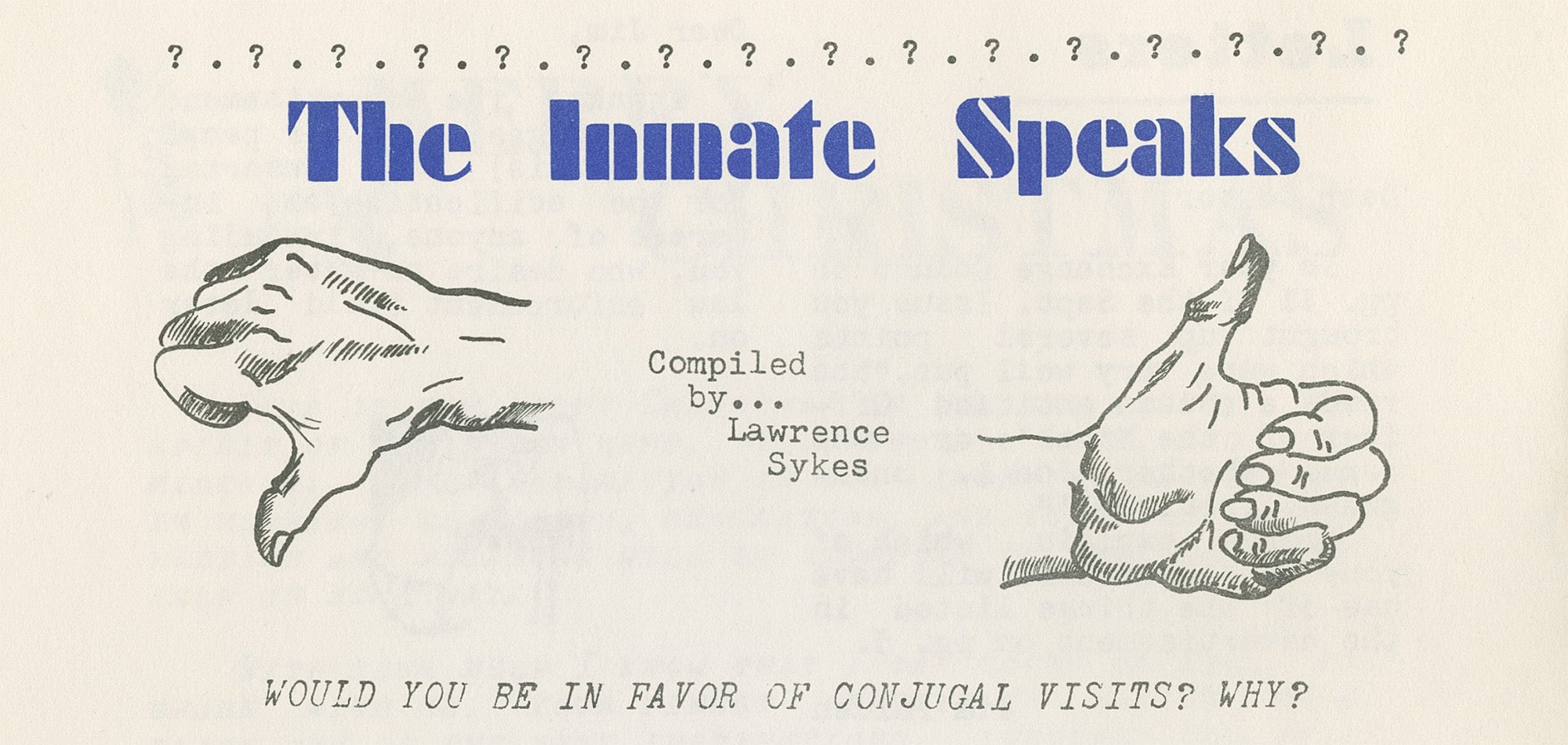
When Parchman officially sanctioned conjugal visits in 1965 after the policy was unofficially in place for years, administrators saw it as an incentive for obedience, but also a solution to what was sometimes called the “ Sex Problem ,” a euphemism for prison rape . Criminologists of the era viewed rape in prison as a symptom of the larger “ problem of homosexuality ,” arguing that the physical deprivations of prison turned men into sexual deviants—i.e., men who wanted to have sex with other men. In this context, conjugal visits were meant to remind men of their natural roles, not merely as practitioners of “ normal sexuality ,” but as husbands. (Framing prison rape as a problem of ‘homosexuals’ was commonplace until Wilbert Rideau’s Angolite exposé Prison: The Sexual Jungle revealed the predation for what it was in 1979.)
Officials at Parchman, the sociologist Columbus B. Hopper wrote in 1962 , “consistently praise the conjugal visit as a highly important factor in reducing homosexuality, boosting inmate morale, and… comprising an important factor in preserving marriages.” Thus making the visits, by definition, conjugal, a word so widely associated with sex and prison that one can forget it simply refers to marriage. Men—and at the time, conjugal visits were only available to men—had to be legally married to be eligible for the program.
But for the men at Somers, the best argument for conjugal visitation was obvious—with one telling detail. The privacy afforded by the red houses at Parchman, Richard Brisson wrote “preserve some dignity to the affair,” creating “a feeling of being a part of a regular community rather than … participating in something that could be made to appear unclean.” For lovers secluded in bedrooms, “[t]here is no one about to mock them or to embarrass them,” he wrote. This observation suggests the ubiquity of surveillance in prison, as well as its character.
Carceral institutions are intended to operate at a bureaucratic remove; prisoners are referred to by number and were counted as “ bodies .” Guards must act as ambivalent custodians of these bodies, even when the nature of their job can be quite intimate. Prisoners are routinely strip-searched and frisked; they must ask permission to exercise any movement, to perform any bodily function. This is as true today as it was in Somers, where men frequently complained that they were treated like children. “You are constantly supervised, just as if you were a one-year-old child,” Ray Bosworth wrote in 1970 .
But guards are not parents, and the tension between dutiful ambivalence and intimate supervision often manifests as disgust. On a recent visit to Bedford Hills Correctional Facility, a maximum-security women’s prison in upstate New York, prisoners complained of being ridiculed during strip searches, and hearing guards discussing their bodies in the corridors.

This attitude extends to rules regulating touch between prisoners and visitors. Writing about San Quentin State Prison in California in the early 2000s, the ethnographer Megan L. Comfort described a common hierarchy of visits , each with its own allowable “degree of bodily contact.” Death Row cage visits allowed for hugs in greeting and parting, while a contact visit allowed for a hug and a kiss. The nature of the kiss, however, was subject to the discretion of individual guards. “We are allowed to kiss members of our families, hello and goodbye, but the amount of affection we may show is limited by the guard,” James Abney wrote for the Somers Weekly Scene in 1971. “If he feels, for instance that a man is kissing his wife too much or too passionately, then he may be reprimanded for it or the visit may be ended on the spot.”
When Somers held its first “ Operation Dialogue ,” a “mediated discussion” among prisoners and staff in May 1971, conjugal visits were a primary concern. By then, California (under Governor Ronald Reagan) had embraced the policy—why hadn’t Connecticut? Administrators argued that furloughs, the practice of allowing prisoners to go home for up to several days, were a preferable alternative. This certainly would seem to be the case. In August 1971, the Scene quoted Connecticut Correction Commissioner John R. Manson, who criticized the skeezy, “tar-paper shacks” at Parchman, concluding that furloughs were “ a less artificial way for inmates to maintain ties with their families .” But to be eligible for furloughs, men were required to be within three or four months of completing their sentence. In the wake of George H.W. Bush’s infamous “ Willie Horton ” campaign ad in 1988, a racially-charged ad meant to stoke fear and anti-Black prejudice in which a violent attack was blamed on Liberal soft-on-crime policies (specifically scapegoating Michael Dukakis for a crime committed on a prison furlough that predated his tenure as governor), prison furloughs were mostly abolished. They remain rare today, still looming in the shadow of the Horton ad.
Conjugal visits are considered a rehabilitative program because, as Abney wrote, it is in “society’s best interest to make sure that [a prisoner’s] family remains intact for him to return to.” Unspoken is the disregard for people serving long sentences, or life, making conjugal visits unavailable to those who might need them the most.
The campaign for conjugal visits continued throughout the 1970s. Then, in 1980, in a sudden and “major policy reversal ,” the state of Connecticut announced that it would instate a “conjugal and family visit” program at several prisons, including Somers. Subsequent issues of the Scene outline the myriad rules for application, noting that applicants could be denied for a variety of reasons at the discretion of prison administrators.
The earliest conjugal visits at Somers lasted overnight but were less than 24 hours in total. Men could have multiple visitors, as long as they were members of his immediate family. This change signaled a new emphasis on domesticity over sex. Visits took place in trailers equipped with kitchens, where families cooked their own meals. Describing a similar set-up at San Quentin more than two decades later, Comfort wrote that the trailers were meant to encourage “people to simulate an ordinary living situation rather than fixate on a hurried physical congress.”
By the early 1990s, conjugal visitation, in some form, was official policy in 17 states. But a massive ideological shift in the way society viewed incarcerated people was already underway. In a seminal 1974 study called “What Works?”, sociologist Robert Martinson concluded that rehabilitation programs in prison “ had no appreciable effect on recidivism .” Thinkers on the left saw this as an argument for decarceration—perhaps these programs were ineffective because of the nature of prison itself. Thinkers on the right, and society more broadly, took a different view. As (ironically) the Washington Post observed, the findings were presented in “lengthy stories appearing in major newspapers, news magazines and journals, often under the headline, ‘ Nothing Works! ’”
Martinson’s work gave an air of scientific legitimacy to the growing “tough-on-crime” movement, but the former Freedom Rider, who once spent 40 days at Parchman, spawned punitive policies he couldn’t have predicted. In 1979, Martinson officially recanted his position. He died by suicide the following year.
In Mistretta v. United States (1989), the court ruled that a person’s demonstrated capacity for rehabilitation should not be a factor in federal sentencing guidelines because, they wrote, studies had proved that rehabilitation was “an unattainable goal for most cases.” It effectively enshrined “nothing works” into law.
Weekly Newsletter
Get your fix of JSTOR Daily’s best stories in your inbox each Thursday.
Privacy Policy Contact Us You may unsubscribe at any time by clicking on the provided link on any marketing message.
“Nothing works” gave rise to harsher sentencing, and more punitive policies in prisons themselves. In 1996, the state of California drastically reduced its conjugal visitation program . At San Quentin, this meant conjugal visits would no longer be available for people serving life sentences. To have benefitted from the program, and then have it taken away, was a particular blow to prisoners and partners alike. One woman told Comfort that she was in “mourning,” saying: “To me, I felt that it was like a death. ”
We don’t know how the men at Somers might have felt about this new era, or the heyday of conjugal visits that came before it. There are no issues of the Weekly Scene available after 1981 in the American Prison Newspapers collection, which is just after the visits began. But their writing, particularly their poetry, offers some insight into the deprivation that spurred their request. In 1968, James N. Teel writes, “Tell me please, do you ever cry, / have you ever tried to live while your insides die? ” While Frank Guiso , in 1970, said his existence was only an “illusion.” “I love and I don’t, / I hate and I don’t / I sing and I don’t / I live and I don’t,” he writes. But for others, disillusionment and loneliness take a specific shape.
“I wish you could always be close to me,” Luis A. Perez wrote in a poem called “ The Wait ” 1974:
I will hold your strong hand in my hand, As I stare in your eyes across the table. Trying to think of the best things to say, I then notice how I will not be able. I will long for your tender embraces, For your long and most desirable kiss. As I sleep cold for warmth of your body, You my love, are the one I will miss…
Today, only four states—California, Connecticut, Washington and New York—allow conjugal visits. (Mississippi, where Parchman is located, ended conjugal visitation in 2014 .) Some argue that Connecticut’s Extended Family Visit (EFV) program, as it is now called, doesn’t actually count , because it requires a prisoner’s child to be there along with another adult . There is also some suggestion that Connecticut’s program, while still officially on the books, has not been operational for some time.
The COVID-19 pandemic gave further cause to limit contact between prisoners and visitors, engendering changes that don’t appear to be going away anytime soon.
Somers was reorganized as a medium-security facility and renamed the Osborn Correctional Institution in 1994. A recent notice on the facility’s visitation website reads: “Masks must be worn at all times. A brief embrace will be permitted at the end of the visit .”
Support JSTOR Daily! Join our new membership program on Patreon today.

JSTOR is a digital library for scholars, researchers, and students. JSTOR Daily readers can access the original research behind our articles for free on JSTOR.
Get Our Newsletter
More stories.

- The Power of the Veil for Spanish Women
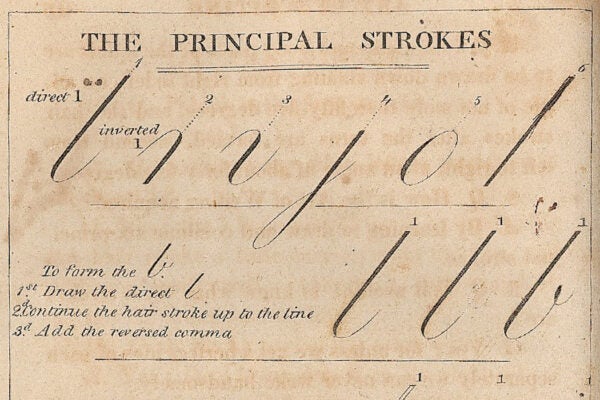
- Before Palmer Penmanship
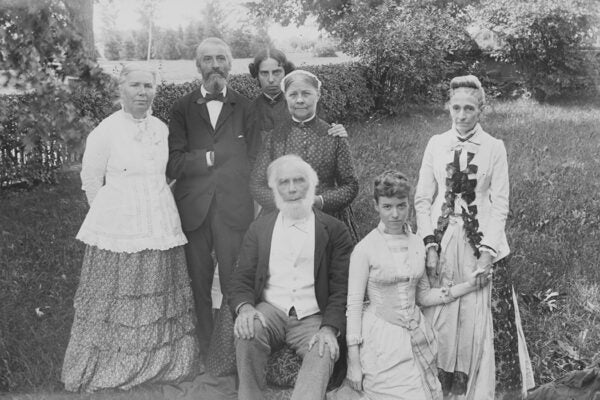
- Archival Adventures in the Abernethy Collection

Elephant Executions
Recent posts.
- Crucial Building Blocks of Life on Earth Can More Easily Form in Outer Space
- Nightclubs, Fungus, and Curbing Gun Violence
Support JSTOR Daily
Sign up for our weekly newsletter.
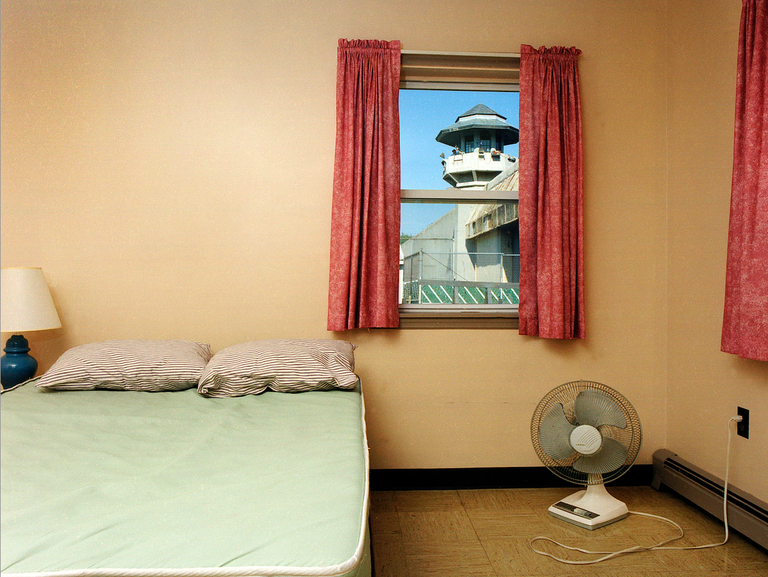
Sex, Love, & Marriage Behind Bars
What are conjugal visits really like? Incarcerated journalist John J. Lennon takes Esquire inside one of the last bastions of prisoner intimacy in America: trailers of New York.
I first heard about the trailers, prison vernacular for conjugal visits, on Rikers Island. It was 2002, I was twenty-four, and I was awaiting trial on murder charges. The guy the next bunk over in the communal dorm knew I was facing a lot of time, even if I didn’t know that. I was delusional in the beginning. We all are.
The bunkmate had just finished a dime—a ten-year sentence—for assault and was now in on a parole violation for breaking curfew, caught on a tip called in by his wife. Still, he loved her, and he loved telling me about going on conjugals with her up in Auburn, a maximum-security prison. It wasn’t just about the sex, he said. It was forty-eight hours of freedom, or close to it. Most of New York’s maximum-security prisons had them. They weren’t trailers, not anymore, but modular homes. He described the units: two, sometimes three bedrooms—the prison supplied pillows, bed linens, towels, and washcloths—a living room, a bathroom, and a full kitchen stocked with pots and pans, a coffee maker, a blender, and utensils. A wire bolted to the counter next to the sink was connected to the handle of the kitchen knife. His wife would bring clothes, cosmetics, and groceries: milk, eggs, pork chops, shelled shrimp. Glass containers weren’t allowed; neither was alcohol, not even as a makeup ingredient. Outside there was a picnic table, a barbecue pit, and a children’s play area.

It was, the fella in the next bunk told me, an opportunity for good times, good eating, and good sex. An incentive to stay out of trouble in the hope of experiencing a touch of love.
There was a hitch: Your partner had to be your legal spouse. Close family members were also eligible, of course, and this was really the objective of these visits: to build and maintain better family ties. But that was beside my bunkmate’s point. If I was convicted, he said, he recommended I put an ad on one of those prisoner dating websites (Prison Pen Pals, Write a Prisoner), find a woman, fall in love, make it official, then head for the trailers.
In 2004, I was sentenced to twenty-eight years to life. The minimum was longer than I’d been alive. Early on, I didn’t think much about the implications for my love life. At twenty-four, I’d had plenty of sex but never a real relationship, or even healthy intimacy. Besides, there were more pressing concerns: appealing my conviction, learning how to survive in this place.
I first saw the trailers at Clinton Correctional, a maximum-security prison a few miles south of the Canadian border, in Dannemora. By then I’d learned that New York’s Department of Corrections and Community Supervision didn’t actually call them conjugal visits. Only Mississippi did. While the word conjugal simply means “related to marriage,” these visits began to carry lewd implications, and other states opted to rebrand: In California, it was known as “family visiting.” In Connecticut and Washington, they were referred to as “extended family visits.” In New York, it was, and still is, called the Family Reunion Program, or FRP.

In 2005, I had my first FRP visit—with my mother and my aunt. My aunt cooked bacon and eggs in the morning, grilled porterhouse steaks and tossed salads for dinner. We sank into the soft couches, ate, and watched Law & Order reruns, oddly Mom’s favorite show. We talked until interrupted by the muffled screams of a couple through the wall of the attached unit. We laughed awkwardly, avoiding eye contact, and I felt kind of jealous. Three times a day, a phone in the unit rang. I picked up, spat my last name and identification number into the receiver, then stepped outside and waved to the watchtower guard. That count was one of the only reminders of prison.
When I returned to my block, guys asked how the conjugal had gone. Great, I said. When I mentioned it was with my mother and my aunt, they sort of nodded, like, Oh, that’s cool, too. I loved visiting with my family. But I did start to think about what it would be like to be with a woman again.
.css-f6drgc:before{margin:-0.99rem auto 0 -1.33rem;left:50%;width:2.1875rem;border:0.3125rem solid #FF3A30;height:2.1875rem;content:'';display:block;position:absolute;border-radius:100%;} .css-1aglugu{font-family:Lausanne,Lausanne-fallback,Lausanne-roboto,Lausanne-local,Arial,sans-serif;font-size:1.625rem;line-height:1.2;margin:0rem;}@media(max-width: 48rem){.css-1aglugu{font-size:1.75rem;line-height:1.2;}}@media(min-width: 64rem){.css-1aglugu{font-size:2.375rem;line-height:1.2;}}.css-1aglugu b,.css-1aglugu strong{font-family:inherit;font-weight:bold;}.css-1aglugu em,.css-1aglugu i{font-style:italic;font-family:inherit;}.css-1aglugu:before{content:'"';display:block;padding:0.3125rem 0.875rem 0 0;font-size:3.5rem;line-height:0.8;font-style:italic;font-family:Lausanne,Lausanne-fallback,Lausanne-styleitalic-roboto,Lausanne-styleitalic-local,Arial,sans-serif;} Trailer visits were never perfect. Sometimes they were hard. But in many ways, they felt like rehearsals for life on the outside.
I got by with my hand and my memories, with the occasional assist from Buttman or High Society. Many of us who’ve been locked up all these years try idiosyncratic methods to pleasure ourselves. Some use a Fifi—a rolled towel with a plastic bag stuffed in the crevice; inside the bag is a rubber glove lubed with Vaseline that can be warmed in a hot pot of water, if one prefers. The crevice can be tightened or loosened by a strap wrapped around the rolled towel, creating different sensations. Fucking Fifis was an intimate ritual for one of my neighbors. At night he hung a curtain across his cell bars, prepped his Fifi, rolled the whole thing up in his mattress—he said it was more like a big-booty girl that way—laid out a few porno mags, and started thrusting.
But I wasn’t looking to hump a Fifi for the next twenty-five years.
Married men in the joint who went on conjugals seemed to have the most meaningful lives: They worked out, they went on visits, they sported crispy new sneakers and polo shirts with the horse, as if to say to the rest of us, I got a lady who loves me, and I got more status than you. At least, that’s how I took it. Every few months, they disappeared—most men kept their conjugal dates to themselves to avoid attracting envy—but we all knew where they’d gone. They came back to the cellblock with hickey-covered necks, looking pleasantly tired. I decided that was how I wanted to serve my sentence.
Mississippi State Penitentiary, of all places, was the first facility in the U. S. to offer conjugal visits, in the early 1900s. Also known as Parchman Farm, the segregated prison functioned as a revenue-generating plantation that produced cotton, cattle, pork, and more; its prisoners performed all the hard labor. To incentivize their work, administrators began arranging for prostitutes to visit on Sundays, and prisoners slept with them wherever they could—tool sheds, storage areas, the barracks. At first, only Black prisoners were allowed to participate, and for deeply racist notions “about Black men’s allegedly voracious sexual natures and appetites,” says Heather Ann Thompson, author of the Pulitzer-prize-winning history of the Attica uprising, Blood in the Water, “that Black prisoners could be forced to work even harder not just under threat of the lash but also, due to their savage nature, the promise of sex.”

Starting around 1940, all of Parchman’s prisoners were able to participate, regardless of race. By the late fifties, prostitutes were banned, replaced by prisoners’ spouses, common-law wives, and female friends. In 1972, the program opened to the facility’s female prisoners. Still, the system was marked by prejudice. “The most important question concerning a program of conjugal visiting,” wrote Columbus Hopper in his 1969 study of Parchman, Sex in Prison, “is whether it helps to reduce the problem of homosexuality in prison.” Hopper was the leading conjugals researcher of his time, and the “problem of homosexuality” seems to have been one of the main forces behind his advocacy. Truth is, in my twenty-one years of incarceration, I’ve never been sexually assaulted or witnessed that kind of assault.
New York’s first FRP began in 1976, with five 12-foot-by-70-foot trailers in a former cow pasture at Wallkill Correctional. Attica got its trailers in 1977, six years after the prisoner uprising for more humane treatment that, when law enforcement took back the prison, left thirty-nine dead. In the first eighteen months of Attica’s FRP, 1,179 prisoners participated.
By 1993, seventeen states allowed some version of extended family visits. That year in New York, 12,401 family members attended FRPs across the state. “The effectiveness of the program is beyond dispute,” the prison commissioner wrote in an op-ed around that time.
Data supports the former commissioner’s claims. According to a recent literature review, prisons that allow conjugal visits have better disciplinary records than those that do not. What’s more, studies have determined that released prisoners with an established relationship have a much better chance of not returning to prison. (In 1980, New York’s corrections department published findings suggesting that participation in the program decreased recidivism rates by as much as 67 percent.)
Yet since the start of such programs, fierce resistance has followed. By the early nineties, the era of mass incarceration was fully under way, and across the country, prison programs that incentivized good behavior—furloughs, work release, college, conjugals—were on the chopping block. Why, the thinking went, should we coddle criminals with taxpayer money? (It’s worth noting that FRP upkeep is paid for in part by prisoner fundraisers.) And don’t conjugals present one more way to introduce contraband?
As early as 1969, when Hopper published his findings on Parchman, conjugal visits were available in Chile, Ecuador, Japan, Mexico, Costa Rica, and the Philippines. Today, that list includes Qatar, Argentina, Brazil, Belgium, Sweden, Spain, France, Russia, and Saudi Arabia.
The United States has shifted in the opposite direction. In the eyes of the law, conjugal visits are a privilege, not a right. The Supreme Court has repeatedly upheld prison administrators’ latitude to limit prisoners’ rights, including visitation, writing in 2003 that “freedom of association is among the rights least compatible with incarceration.” In 2014, Mississippi did away with its program. “There are costs associated with the staff’s time,” the state’s prison commissioner said at the time. “Then, even though we provide contraception, we have no idea how many women are getting pregnant only for the child to be raised by one parent”—as if such family planning were his call to make.
Today, only four states allow conjugal visits—New York, California, Washington, and Connecticut—though when Covid came, Connecticut’s program was suspended, and it has yet to return. Federal prisons don’t offer the privilege. New York’s program has been a success: FRP is offered at twelve of its fifteen maximum-security prisons and eleven of its twenty-six medium-security prisons. Since 2011, same-sex couples have been able to participate. Yet each year over the past decade or so, Republican state senators have introduced a bill to eliminate FRP. Conservatives preach the importance of a solid family structure. Why would they want to sabotage prisoners who are trying to build and maintain theirs?
By 2009, I was in Attica; my appeals had been denied. I was thirty-two and lonely. I’d spend hours each day watching the tiny TV in my cell. The Bachelor was my favorite show—a glimpse of intimacy, however stage-managed, and a break from my bleak reality. I felt like I was squandering an opportunity by not putting myself out there. I told Mom what the guy on Rikers Island had suggested, and she put an ad on the prison dating website Friends Beyond the Wall.
Danielly was a year younger than me and lived with her teenage son in a housing project on the Lower East Side. “I’m Dominican, and brown. Do you like that?” she wrote. Yes, yes, I loved it! In an early letter, I brought up the trailers, told her to imagine an uninterrupted weekend together in a sort of cabin, no cell phones, no distractions—just us. She didn’t need to be sold. Her mom had married a guy who’d done time, she told me, and she remembered visiting those little homes in the prison as a young girl.

Danielly started visiting me at Attica. She was my type—curvy, full of attitude and affection. We had the kind of chemistry that made my stomach flutter. But I soon learned that my type was much harder to handle on the inside than it had been when I was on the outside. The guy she’d described as her ex-boyfriend was more like her current boyfriend. When I called her, she sometimes wouldn’t answer. I was left lovesick, and that’s no way to live in prison. So I let her go.
In January 2011, I started corresponding with Raina, a California blonde, thirty-nine, who’d never been married and had no kids, and it wasn’t a dealbreaker that I’d killed a man. She had a great sense of humor, and while she’d known darkness in her own life, she’d needle anyone who took theirs too seriously. I was hooked. She was emotionally intelligent, we spoke the language of recovery, and our relationship felt safe. She moved across the country for me. One day in 2012, in Attica’s visiting room, I proposed to her, and she said yes. Six months later, we joined a few other couples in a small room with a Goofy mural painted on the wall and Attica’s town clerk seated at a table, and we got married.
By 2014—after a series of applications, denials, appeals, and interviews, including one in which Raina was told I didn’t carry any sexually transmitted diseases—we had our first FRP date.
Two days beforehand, I had to piss in a cup under a guard’s gaze for my drug screen. Then again the day of, and again after I came off the trailer. Most of the work was on Raina: shopping, traveling, then getting processed, food pushed through an X-ray machine, gloved fingers sifting through her panties and K-Y jelly.
The corrections officer escorted a handful of us through the Attica lobby, a part of the prison I had never seen before. Gates opened and closed, and we walked to the FRP compound. A fence enclosed the five red-sided homes, situated so that the rest of the prison couldn’t see in. Though the watchtower guard kept a close eye.
Sitting on the couch, looking around, I felt . . . joy. In the system, you’re always waiting, and never for anything good: trial, sentencing, transfers, getting cuffed and shackled, always in a cell or a bullpen or on a bus eating bologna sandwiches. Now I didn’t know what to do with myself, and I loved it. I got up from the couch, turned on the stereo, then walked outside on the grass, sat on the children’s swing, went back inside. I grabbed the remote, turned on the flat-screen television, flipped through the stations. To do whatever I wanted, and to be waiting for my wife so we could do whatever we wanted—I felt giddy. Through the window I watched my neighbor in his kitchen as he boiled the silverware—forks, (butter) knives, a spatula, a ladle, all metal and engraved with tracking numbers—in one pot of water, and added a few drops of scented oil to another, to perfume the place. Finally, I heard one of the guys yell, “They’re here!”
A corrections van with blue-tinted windows pulled up, and the family members got out. A little boy ran to his father and jumped in his arms. And there was Raina. The CO let me help her with her luggage, which was in a container marked with our unit number.
As soon as the door of our unit closed, we threw the groceries—including cuts of filet mignon and A.1. sauce—on the table and started awkwardly kissing. As we began to undress, there was a knock on the door. Raina put on a shirt and I cracked the door. It was the CO, who just needed our container. It was like that, the conjugals; they were such a departure from regular prison life. Even the staff interactions were all good.

Raina and I got back to it. It was my first time in eleven years, so I figured I’d finish fast. But it was the opposite. We went at it for a while—soft, hard, slow, fast, this way, that way—and nothing seemed to bring either of us closer to climax. It was like I’d never touched a woman before. It felt weird that nobody else was watching us. I eventually pulled out and brought myself to ejaculation.
On some level, we hadn’t expected the first time to be amazing. Though it’s hard to make bad sex better, we had to try. We loved each other. We went on six more FRP visits, but the situation didn’t improve. Our issues were less about friction and more about fantasy, or the lack thereof.
Danielly had sent me letters over the years since we’d first met, none of which I’d replied to. But in 2015, as my relationship with Raina was coming to an end, I finally wrote back, explaining my marital woes. Danielly replied that I never should have gotten married in the first place, that she was my soulmate. She said she was still on and off with her boyfriend, but he didn’t matter. If I got divorced and married her instead, she’d come to Attica and fulfill all my fantasies.
I divorced Raina and proposed to Danielly.
In October, we got married by the same Attica town clerk who’d officiated the last time. The Goofy mural was gone. We posed for our wedding picture in front of a seascape of sea lions and colorful fish. Danielly looks sad in the photo, barely smiling. She’d wanted this day to be so much more special than it was.
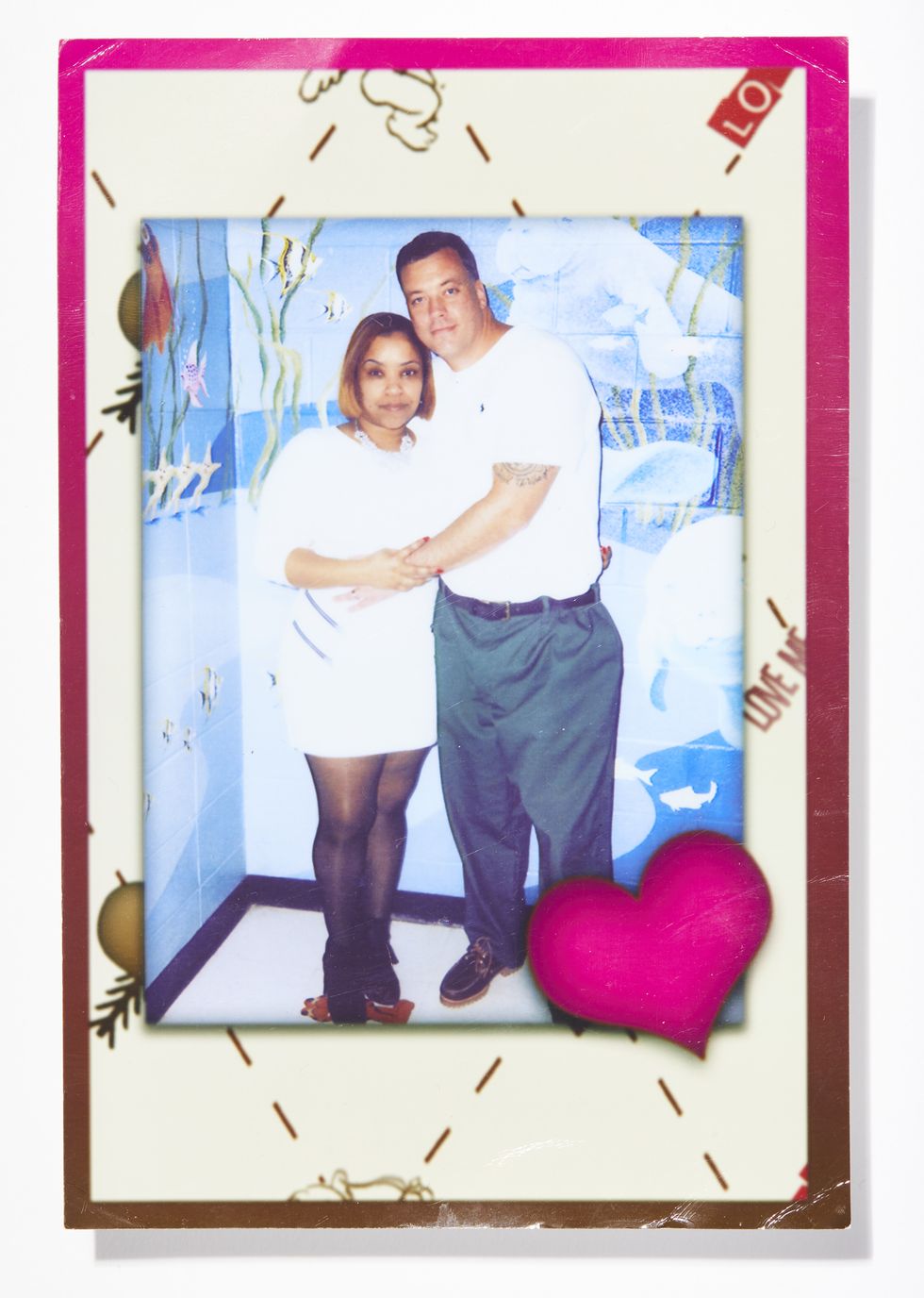
Afterward, I bribed a CO with a few packs of Newports to let the cellblock’s tattoo artist come into my cell, and with a needle made from an uncoiled lighter spring powered by a repurposed beard-trimmer motor, he inked danielly on the inside of my upper arm in looping script. Once she ditched the boyfriend for good, she had my name inked on her forearm. We craved each other. Our kisses, deep and long and wet, always felt like good sex.
I wanted to transfer to Sing Sing, forty miles north of New York City—among other reasons, it would take Danielly an hour by train, as opposed to the eleven-hour bus trip she took both ways to visit me at Attica. But Attica was a disciplinary prison, rife with violence; the number of prisoners on good behavior was low, the FRP waitlist short. You could book a spot every forty or fifty days. At Sing Sing, the wait was closer to ninety days. I weighed the pros and cons. Con: waiting twice as long to be together. Pro: saving Danielly the hassle of a big trip to the middle of nowhere, which would probably mean I’d see her more often.
I submitted my paperwork, got approved, and transferred in November 2016.
In February, we had our first FRP date. The compound was pretty much the same as the one at Attica, but at Sing Sing we got a Polaroid camera and twelve blank photos. Some couples went into the units and did not come out for the allotted forty-eight hours. Others were more social. Me and my friend Andy Gargiulo—convicted in 2006 of killing his reputed mobster brother-in-law; we’d had the same lawyer—would sometimes coordinate our FRP visits. He was a lot older than me, around eighty, but we got along. So did our better halves. His wife brought the best Italian food in Brooklyn—cannolis, fresh mozzarella, and tender veal—and when the weather was nice, the four of us would sit outside and barbecue.
Danielly was provocative, and that turned me on. We argued; we canceled visits on each other. We often had angry, shit-talking sex. Sometimes we played nice, but she’d never let it get to my head. “Boy,” she’d say, “you have so much to learn about women.” We couldn’t have sex for the entire forty-eight hours, but it sometimes felt like we were trying.
Intimacy came in other forms. She introduced me to ASMR; I brewed Bustelo for her and microwaved the half-and-half so it wouldn’t cool off the coffee too much. “Coffee,” by Miguel, became our song. We watched The Notebook, and she recited her favorite lines. We watched Warrior, and when Tom Hardy’s character hugs his drunk father, played by Nick Nolte, Danielly comforted me as I cried.
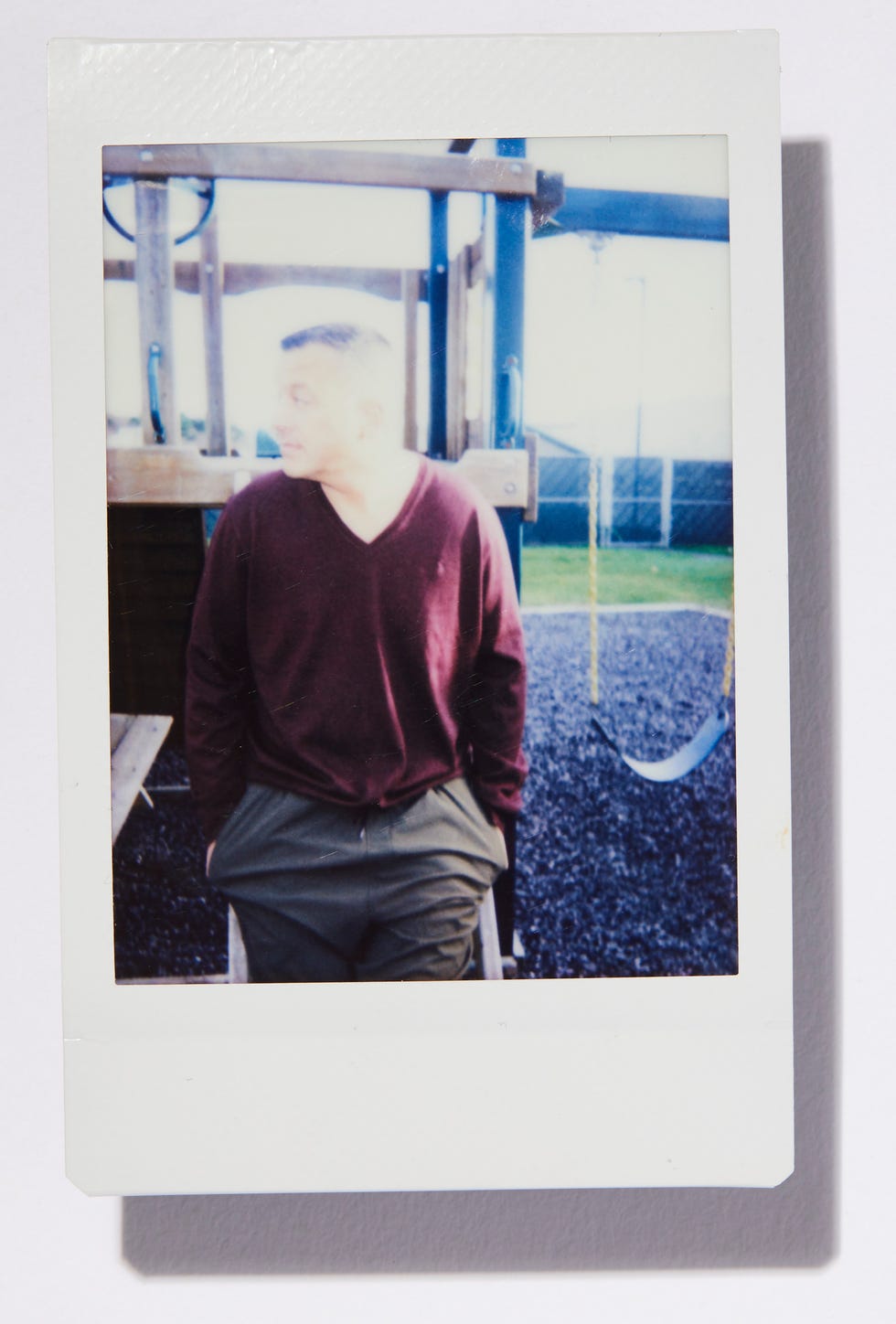
I know now that our relationship wasn’t healthy. My moments of joy were outweighed by my jealousy and anxiety. I’d get annoyed if she didn’t read my latest article. “You’re all into yourself and your career,” she’d say. “Women don’t like that, bro!” Or “I fell in love with the guy at Attica, before he became the writer.” That one hurt. But it’s not like I’d ask about her job as a nurse at a Bronx clinic. She’d want to talk about our future, and I’d urge her to stay in the present. She’d storm off into the bedroom, slam the door, and curse me out in rapid-fire Spanish. Well, I’d think, this is life.
By March 2020, our relationship was rocky. But for the first twenty-four hours of our first FRP in more than a year, we were getting along. As we prepped lunch, a knock came at the door. It was the security captain. Because of Covid, our visit was over, along with our last shot at rekindling.
By the time FRP visits were restored, a year and a half later, I’d been transferred to Sullivan Correctional, in the southern Catskills. Danielly came up twice. But too much time had passed, and other relationships had formed: hers with somebody else, mine with my career. Becoming a journalist in the joint brought its own stress, and my anxiety worsened; things like pissing in a cup with a guard peeking seemed impossible. Recently, we divorced.
Would I have been better off not having experienced intimacy for the past twenty-one years? Would Raina and Danielly have been better off never having met me? I’ve since realized that in both relationships, I focused more on the affection I was getting than the affection I was giving. All this time spent living in my head, confined to a six-foot-by-nine-foot cell, has rendered me less expressive and more emotionally stuck. My thoughts would bounce around my brain but never make it out of my mouth, which left Raina, then Danielly, feeling neglected. The time I used to spend writing love letters I now spend writing articles. Sometimes I feel like I took the two of them for granted. There’s an immense effort, this leap toward love in which the only physical manifestation comes in the form of conjugal visits. And it’s exerted not by the prisoners but by our partners. They wait, they shop, they lug, they travel, they get gossiped about by friends and family and insulted by COs.
Trailer visits were never perfect. Sometimes they were hard, especially at the end—me returning to prison, my woman going home alone. But in many ways, they felt like rehearsals for life on the outside. I believe that because of my experiences with conjugals, when I do get out, I’ll be more sensitive to the feelings of those closest to me. “It remains utterly and inescapably true that to be a human being is to need to be connected to, to bond with, and to be nurtured by other human beings,” Heather Ann Thompson told me. “Serving one’s sentence does not change that.”
So I’m single now. Middle-aged, too. Sometimes I imagine the kind of woman I’ll attract when I’m on the outside, and I wonder if I’ll resent her because she didn’t fall for me when I was on the inside. Which is absurd, and I know I need to work that shit out. But it also feels like a nod to the women who’ve loved me, a thank-you to all the partners who’ve sacrificed so much to share their love with those of us who are locked up.
I think about a moment Danielly and I shared with Andy and his wife, who was wearing Prada glasses and a perfume called La Vie Est Belle. The sun was bright; we sat at the picnic table, eating the best of both kitchens. Andy was talking about a TV show he watched in his cell—maybe it was America’s Got Talent —and Danielly told him how she also loved that show. While recalling the final performance of a child singer who’d recently won, Andy choked up. Right there at the wooden table, surrounded by the thirty-foot concrete wall and the guard with the AR-15 perched in the tower. Danielly teared up, too. “He gets emotional on these visits,” Andy’s wife said in a tough Brooklyn accent, smiling. More than the sex, it’s moments like these—simple, safe, and endearing—that have provided me with what prison has stripped away: a taste of intimacy.

@media(max-width: 73.75rem){.css-1ktbcds:before{margin-right:0.4375rem;color:#FF3A30;content:'_';display:inline-block;}}@media(min-width: 64rem){.css-1ktbcds:before{margin-right:0.5625rem;color:#FF3A30;content:'_';display:inline-block;}} Esquire Select Exclusives

What Happens When Your Longtime Therapist Dies?

How (Not) To Grieve

What Is Successful Nonmonogamy Anyway?

American Tragedy: The Death of an Alabama Pastor

Is “Doomslang” Making Us All Numb?

Is It Even Possible to Become More Productive?

The All-American Father

What If Profound Lovesickness Isn’t Romantic?

The Redemption of Al Sharpton
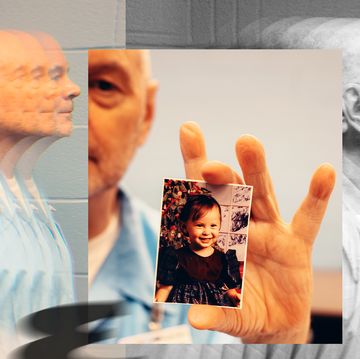
What Really Happened to Baby Christina?

Inside My Mid-Life Crisis

Reckoning with the South

This couple wants you to know that conjugal visits are only legal in 4 states
- Click to share on Twitter (Opens in new window)
- Click to share on Facebook (Opens in new window)
- Click to share on Pocket (Opens in new window)
- Click to email a link to a friend (Opens in new window)

Editor's note: This story was co-written by inside-outside couple Steve Higginbotham and Jordana Rosenfeld, weaving together Jordana's personal experience and reporting with letters from Steve. Together, they examine popular myths around conjugal visits, their decreasing availability, and the punitive logic behind the state's policing of sex and intimacy that stifles relationships like theirs. Jordana's words appear below in the orange boxes on the right; Steve's are in the purple on the left.

The other day, when I told my grandmother I was researching the history of conjugal visits for an essay, she said, "Oh, like in my stories?"
You can't talk about conjugal visits without talking about television, because television is pretty much the only place where conjugal visits still exist. A wide variety of TV shows either joke about or dramatize conjugal visits, from popular sitcoms that have little to nothing to do with prison life, like The Simpsons , Family Guy , and Seinfeld, to prestige dramas like Prison Break and Oz that purport to offer "gritty" and "realistic" prison tales. Conjugals loom large in public imagination about life in prison, which leaves people under the unfortunate impression that they are in any kind of way widespread or accessible.
Their availability has been in steady decline for more than 25 years. The mid-to-late 1990s are the often-cited high point of conjugal visits , with 17 states offering some kind of program. (Federal and maximum security prisons do not allow conjugals.) This means that at their most widespread, conjugal visits were only ever permitted in one-third of all states.
There are only four U.S. states that currently allow conjugal visits, often called "extended" or "family" visits: California, Connecticut, New York, and Washington. Some people say Connecticut's program doesn't count though, when it comes to conjugals—and the Connecticut Department of Corrections agrees. Their family visit program is explicitly intended for the benefit of children and requires that the incarcerated person receiving visitors be a parent. Their child must attend .
My boyfriend has been in prison for 28 years. He was 18 during the high point of conjugal visit programs. That's when the state of Missouri decided to lock him up for the rest of his natural life, effectively sentencing him to a lifetime of deep loneliness and sexual repression, not just because Missouri doesn't offer conjugal visits, but because when you are incarcerated, your body belongs to the state in every possible way—from your labor to your sex life.
Every prison riot ever could have been prevented with some properly organized fucking.

That's my boyfriend, Steve.
Not being able to physically express love—or even lust—builds frustration that boils over in unintended ways.
Intimacy is policed rigidly in prison, and it has certainly worsened over the years. For most people with incarcerated lovers, intimacy happens not on a conjugal visit, but in the visiting room. Visits now may start and end with a brief embrace and chaste kiss. Open mouth kissing has been outlawed. These rules are enforced with terminated visits and even removing a person from the visiting list for a year or more.
Steve and I have kissed a total of six times.
We have also hugged six times, if you don't count us posing with his arm over my shoulder three times for pictures. The kisses were so brief that I'm not sure I remember what they felt like. He told me later on the phone that he knew he had to be the one to pull away from the kiss before we gave the COs in the bubble reason to intervene because I wouldn't. He knew this, somehow, before he ever kissed me. He was right.
When I last visited him in Jefferson City Correctional Center, Steve told me about a real conjugal visit from '90s Missouri.
Years ago, people used to mess around in the visiting room at Potosi [Correctional Center]. Everyone knew to keep their sensitive visitors away from a certain area, because there was frequent sex behind a vending machine. I can neither confirm nor deny that cops were paid to turn a blind eye to it. I met a guy recently in my wing at JCCC who said he had heard of me, and that maybe I knew his father. I did know his father. I didn't have the heart to tell him that I probably saw his conception behind a Coke machine back in 1995.
The increasing restriction of physical touch—the expanded video surveillance of visiting spaces, the use of solitary confinement for the smallest infractions, and the withering of both in-person and conjugal visit programs—reflects the punitive logic that consensual human touch is a privilege that incarcerated people do not deserve.
This is an evil proposition, and it's one that is at the core of the ongoing dehumanization of millions of people in U.S. prisons, and the millions of people like me who love them.
One woman with an incarcerated partner put it to researchers this way: "The prison system appears to be set up to break families up." And she's right. For the duration of his incarceration, I will never be closer to Steve than the state of Missouri is. I'm reminded during each of our timed kisses: His primary partner is the state.
The most difficult part for me about a romantic relationship with a free woman is that I feel selfish. A lot of self-loathing thoughts creep in. I want the best for her and often question if I am that "best." However, an added benefit is that we can truly take things slowly and explore each other in ways that two free people don't often experience nowadays. We write emails daily. And these are important. We vent. And listen. We continue to build, whereas many free people stop building at consummation.
But these are the realities rarely captured in media portrayals of romantic relationships between free world and incarcerated partners. Conjugals on TV are so disconnected from what it's actually like to be in a romantic relationship with an incarcerated person: Trying to schedule my life around precious 15 minute phone calls, paying 25 cents to send emails monitored by correctional officers, finding ways to symbolically include Steve in my life, like leaving open the seat next to me at the movies. Instead, television shows depict implausible scenarios of nefarious rendezvous that often parrot law enforcement lies. When they do so, they undermine the public's ability to conceptualize that love and commitment fuel relationships like ours.
Although contraband typically enters prisons through staff , not visitors , television shows often present conjugal visits as a cover for smuggling, like in the earliest TV plot I could find involving a conjugal visit, from a 1986 Miami Vice episode. After his girlfriend is killed, Tubbs gets depressed enough to agree to go undercover at a state prison to bust some guards selling cocaine. In his briefing on the issue, Tubbs asks how the drugs are getting into the prison. Conjugal visits and family visits are the first two methods named by the prison commissioner, never mind that I have yet to find any evidence that Florida ever allowed those kinds of visits.
Often, the excuse for policing visits so strictly is that drugs can be exchanged. But I know that lie is used for every type of control in prison. For over a year we had NO CONTACT visits because of the pandemic. During that time, dozens of inmates [at my facility] still overdosed and had drug-related episodes that caused them to need medical attention. Those drugs certainly didn't arrive through visits. They strip search and X-ray me going to and from visits anyway.
Everything in prison now is on camera. When a drug overdose occurs, the investigators track back over footage from visiting room cameras. One officer told me that while they were investigating drugs allegedly passing through the visiting room, they saw a guy covertly fingering his wife. This has happened on more than one occasion, but most guards will have enough of a heart not to bother with violations for some covert touching that wasn't caught until the camera review. Most. Sometimes, a rare asshole will just have to assert his power and write a CDV (conduct violation).
Write-ups or CDVs are given by staff at their discretion. The threat of solitary confinement is always looming in prison. It's another clever way of withholding physical interactions with other human beings as a form of torture. Solitary confinement for anywhere from 10 days to three months is a favorite punishment for "[nonviolent] sexual misconduct. "
There's also a persistent media narrative that prison systems offer conjugal visit programs out of genuine concern for human welfare. A brief glance at the origins of conjugal visits in the U.S. prison system quickly disproves that theory, showing that conjugal visit programs were conceived as a tool of exploitation and social control.
Conjugal visits originated in Mississippi at the infamous prison plantation, Mississippi State Penitentiary, or Parchman Farm. Mississippi state officials opened Parchman in the early 1900s, writes historian David Oshinsky in his book Worse than Slavery: Parchman Farm and the Ordeal of Jim Crow Justice, in order to ensnare free Black people into forced labor. Mississippi, like other Southern states during Reconstruction, passed "Black Codes" that assigned harsh criminal penalties to minor "offenses" such as vagrancy, loitering, living with white people, and not carrying proof of employment—behaviors that were not considered criminal when done by white people. Using the crime loophole in the relatively new 13th Amendment, Mississippi charged thousands of Black people with crimes and forced them to work on the state's plantation.
Parchman officials started offering sex to Black prisoners as a productivity incentive, "because prison officials wanted as much work as possible from their Negro convicts, whom they believed to have greater sexual needs than whites," Oshinsky writes.
"I never saw it, but I heard tell of truckloads of whores bein' sent up from Cleveland at dusk," said a Parchman prison official quoted by Oshinsky. "The cons who had a good day got to get 'em right there between the rows. In my day, we got civilized—put 'em up in little houses and told everybody that them whores was wives. That kept the Baptists off our backs."
A certain kind of sexual morality has been instilled in the minds of many people with conservative religious upbringings. They naturally force this morality on people they consider children. That is how many guards see prisoners: as children.
Many states did not begin to join Mississippi in offering conjugal visits until much later in the century, when conservative governors like California's Ronald Reagan would determine in 1968 that allowing some married men to have sex with their wives was the best way to reduce " instances of homosexuality " in prisons.
Abolitionists who wrote the book Queer (In)Justice , consider how concerned prison administrations have historically been and continue to be about queer sex in prisons. The book exposes both the deep fear of the liberatory potential of queer sexuality, and a broader reality that prisons are inherently queer places since prisons' "denial of sexual intimacy and agency is a quintessential queer experience."
Beyond behavioral control, the rules that determine conjugal visit eligibility are always also about enforcing criminality, since the state decides what kind of charges render someone ineligible to wed or to have an extended visit. Even in the four states that allow these visits, most people with "violent" charges are only allowed to hold their lover's hand and briefly embrace at the beginning and end of visits.
We don't even have enough privacy to masturbate.
I can be written up if anyone sees my dick, especially in the act of masturbation. I could face solitary confinement, loss of job, visits, religious programs, treatment classes, recreation, canteen spend, and school for getting written up. Conversely, I can be strip-searched at any given time and be forced to show everything.
Living in this fishbowl has taught me there is no hiding. Too many bored eyes in the same small area to miss anything. Guards may come knocking on the door at any moment. My cellmate is often inches away from me, and it takes coordination to manage time away from each other because we eat, sleep, go to yard, and do just about everything on the same schedule.
I choose to skip a meal occasionally and embrace the hunger, because it is much less painful than persistent relentless desire. After years of self-release in showers, in a room with snoring cellmates, or as quickly as possible when a brief moment of privacy occurs, my sex drive is all shook up. Current turn-ons could be said to include faucets running and/or snoring men.
Ultimately, this article is not about the right to conjugal visits. It's about the ways that punitive isolation and deprivation of loving physical contact have always been tactics of the U.S. prison system.
Regardless of the quality of the representations, the prevalence of conjugal visits in movies and TV allows people to avoid thinking too hard about what it's like to be deprived of your sexual autonomy, maybe the rest of your life.
I have been locked up since I was 18, and I am 47 now. To be horny in prison for decades is painful. To the body and soul.
There is justice as well as pleasure at stake here, and the difference between the two is slight.
People who love someone in prison live shorter and harder lives. That we do it anyway shows the significance, centrality, and life-affirming nature of intimate relationships to those on both sides of the wall. Maybe it even points to the abolitionist power of romantic and sexual love between incarcerated and "free" people.
So, I guess we start with that thought and work from there to find a way to tear down the system.

As part of Scalawag's 3rd annual Abolition Week, pop justice is exclusively featuring perspectives from currently and formerly incarcerated folks and systems-impacted folks.
More in pop justice:.

Hell and High Water: From Gaza to Mississippi

'It's not a story—it's a life:' A look at Snapped, from the inside

Barbie: Pretty Police

Come on Barbie, give us nothing!
Related stories:, steve higginbotham & jordana rosenfeld.
Steve Higginbotham is a writer who spent many years narrating and transcribing materials into braille for the Missouri Center for Braille & Narration Production . He is serving a death by incarceration sentence in Jefferson City, Missouri. Jordana Rosenfeld is a journalist in Pittsburgh, Pennsylvania. More of her work can be found at jordanarosenfeld.com .
- Login or Sign up
Study Argues that Conjugal Visits Can Reduce Number of Prison Rapes
Researchers at Florida International University contend that states where sexual intercourse between prisoners and their visiting spouses is allowed have fewer rapes and sexual assaults than states where conjugal visits are prohibited, El controversial finding that disputes the theory that sexual offenses are solely crimes of power rather than a means asexual release.
"Our findings propel the idea that sexual violence can be attenuated given appropriate policy initiatives." according to the January 2012 report. "The Effect of Conjugal Visitation on Sexual Violence in Prison." from FlU researchers Stewart D'Alessio, Jamie Flexon and Lisa Stolzenhem,
The FIU study was conducted over a three-year period. from 2004 to 2006, in the states that allowed prisoners conjugal visits at the lime: California, Mississippi, New Mexico, New York and Washington. While sexual violence occurred in states that prohibit conjugal visits at a rate of 226 per 100,000 prisoners, it occurred nearly five times less frequently in the live stales that allow conjugal visits – 57 per 100.000 prisoners.
Thus "inmate-on-inmate sexual offending is much less pronounced in states that allow conjugal visitation." according to the FIU studs.
According to a report from the federal Office Justice Programs, more than 60.000 prisoners nationwide (4.5% of all state and federal prisoners) were sexually victimized in 2007. In some states' prisons, the number of victims of sexual assault that year approached or exceeded 20%. A Bureau of Justice Statistics (BJS) national survey published in August 2010 estimated that approximately 88.500 then-incarcerated adults had been sexually victimized while in prison or jail.
The effect of conjugal visits in reducing sexual assaults in prison should force more states to consider allowing conjugal visits, according to researchers. Conjugal visits have other positive effects. the study said, They help improve, for instance, the functioning of marriages by maintaining a prisoner's) role as husband or wife improve (he (prisoner's) behavior while incarcerated, counter the effects of prisonization, and improve post-release success by enhancing the (prisoner's) ability to maintain ties with his or her family."
"Additionally," the study said, "because conjugal visitation is reported to reduce homosexual activity and because AIDS is often spread by homosexual activity, conjugal visitation may help to attenuate the spread of AIDS in prison."
Researchers volunteered that their study had certain limitations especially that "instances of sexual offending" in prison are underreported and. therefore, there certainly could have been more cases of sexual victimization in states that allow conjugal visits than their data concluded.
Nevertheless. the findings have her policy implications, according to the study programs, researchers argue, "should he geared to view sexual offending as a sex crime instead of solely as a crime of power." Such programming, the study says, could reduce recidivism.
"The harm caused by rape and other forms of sexual violence," researchers concluded, "reverberate through our lives, homes and communities. Additional policy initiatives directed at extinguishing sexual violence, which appears to the undertaken by (prisoners) to satisfy their sexual urges need to be identified."
Source: Florida International University. Department of Criminal Justice: "The Effect of Conjugal Visitation on Sexual Violence in Prison," American Journal of Criminal Misfire, February 2012.
As a digital subscriber to Prison Legal News, you can access full text and downloads for this and other premium content.
Subscribe today
Already a subscriber? Login
More from these topics:
- Electronic Monitoring: An Alternative to Incarceration or a Troubling Extension of Punishment? , April 15, 2024. Commentary/Reviews , Statistics/Trends , Electronic Monitoring , Electronic Surveillance , Bail/Pretrial Release , Conditions of .
- Pharmacies Are Giving Your Prescription Data to Police Without a Warrant , April 15, 2024. Medication , Statistics/Trends , Warrantless Searches .
- ‘Trail ’Em, Nail ’Em, and Jail ’Em’: Issues Private Probation and Parole , April 15, 2024. Sentinel , Contractor Misconduct , Reviews , Statistics/Trends , Cost of Prison Systems , Electronic Monitoring , Probation, Parole & Supervised Release .
- Research Shows It Makes Sense to Hire Individuals with Criminal Records , April 15, 2024. Resources , Work , Statistics/Trends , jobs .
- Time Served Under the First Step Act: Reduction, Not Revolution , April 15, 2024. Statistics/Trends , First Step Act .
- Sentencing Project Finds “Important Inroads” Against Mass Incarceration, Racial Inequality Behind Bars , April 1, 2024. Racial Discrimination , Statistics/Trends .
- Parole and Probation Accused of Driving Prison Growth , April 1, 2024. Commentary/Reviews , Statistics/Trends , Probation, Parole & Supervised Release , Conditions of .
- 428 Georgia Prison Employees Criminally Charged in Five Years , April 1, 2024. Guard Misconduct , Criminal Prosecution , Statistics/Trends .
- Alaska Prisons Report Three Deaths in Three Days , April 1, 2024. Statistics/Trends , Wrongful Death .
- Federal Prisoners Released Under First Step Act Show 37% Reduction in Recidivism , April 1, 2024. Crime , Statistics/Trends , Rehabilitation/Recidivism , First Step Act .
Conjugal Visits
Why they’re disappearing, which states still use them, and what really happens during those overnight visits..
Although conjugal, or “extended,” visits play a huge role in prison lore, in reality, very few inmates have access to them. Twenty years ago, 17 states offered these programs. Today, just four do: California, Connecticut, New York, and Washington. No federal prison offers extended, private visitation.
Last April, New Mexico became the latest state to cancel conjugal visits for prisoners after a local television station revealed that a convicted killer, Michael Guzman, had fathered four children with several different wives while in prison. Mississippi had made a similar decision in January 2014.
A Stay at the “Boneyard”
In every state that offers extended visits, good prison behavior is a prerequisite, and inmates convicted of sex crimes or domestic violence, or who have life sentences, are typically excluded.
The visits range from one hour to three days, and happen as often as once per month. They take place in trailers, small apartments, or “family cottages” built just for this purpose, and are sometimes referred to as “ boneyards .” At the MacDougall-Walker Correctional Institution in Connecticut, units are set up to imitate homes. Each apartment has two bedrooms, a dining room, and a living room with a TV, DVD player, playing cards, a Jenga game, and dominoes. In Washington, any DVD a family watches must be G-rated. Kitchens are typically fully functional, and visitors can bring in fresh ingredients or cooked food from the outside.
In California, inmates and their visitors must line up for inspection every four hours throughout the weekend visit, even in the middle of the night. Many prisons provide condoms for free. In New Mexico, before the extended visitation program was canceled, the prisoner’s spouse could be informed if the inmate had tested positive for a sexually transmitted infection. After the visit, both inmates and visitors are searched, and inmates typically have their urine tested to check for drugs or alcohol, which are strictly prohibited.
What Everyone Gets Wrong
Conjugal visits are not just about sex. In fact, they are officially called “family visits,” and kids are allowed to stay overnight, too. In Connecticut, a spouse or partner can’t come alone: the child of the inmate must be present. In Washington, two related inmates at the same facility, such as siblings or a father and son, are allowed to arrange a joint visit with family members from the outside. Only about a third of extended visits in the state take place between spouses alone.
The Insider’s Perspective
Serena L. was an inmate at the Bedford Hills Correctional Facility in New York from 1999 to 2002. During that time, she qualified for just one overnight trailer visit. Her 15-year-old sister, who lived on Long Island, persuaded a friend to drive her to the prison. “I remember her coming through the gate, carrying two big bags of food, and she said, ‘I got your favorite: Oreos!’ ” Serena says. “It was like a little slumber party for us. When I was first incarcerated, we had tried to write to each other and talk to each other by phone, but there was lots we weren’t really emotionally able to come to terms with until we had that private space, without a CO watching, to do it.”
The (Checkered) History
Conjugal visits began around 1918 at Parchman Farm, a labor camp in Mississippi. At first, the visits were for black prisoners only, and the visitors were local prostitutes, who arrived on Sundays and were paid to service both married and single inmates. According to historian David Oshinsky, Jim Crow-era prison officials believed African-American men had stronger sex drives than whites, and would not work as hard in the cotton fields if they were not sexually sated. The program expanded in the 1940s to include white, male inmates and their wives, and in the 1970s to include female inmates.
Has your partner been in prison? Help others understand what the experience is like by filling out our questionnaire.
Our reporting has real impact on the criminal justice system

Our journalism establishes facts, exposes failures and examines solutions for a criminal justice system in crisis. If you believe in what we do, become a member today.
Stay up to date on our reporting and analysis.
How Do Conjugal Visits Work?

Maintaining close ties with loved ones while doing time can increase the chances of a successful reentry program. Although several studies back this conclusion, it’s widely logical.
While the conjugal visits concept sounds commendable, there’s an increasing call to scrap the scheme, particularly across US states. This campaign has frustrated many states out of the program, leaving only a handful. Back in 1993, 17 US states recognized conjugal visits. Today, in 2020, only four do.
The conjugal visit was first practiced in Mississippi. The state, then, brought in prostitutes for inmates. The program continued until 2014. The scrap provoked massive protests from different right groups and prisoners’ families. The protesters sought a continuance of the program, which they said had so far helped sustain family bonds and inmate’s general attitude to life-after-jail.
New Mexico, the last to scrap the concept, did so after a convicted murderer impregnated four different women in prison. If these visits look as cool as many theories postulate, why the anti-conjugal-visit campaigns in countries like the US?
This article provides an in-depth guide on how conjugal visits work, states that allow conjugal visits, its historical background, arguments for and against the scheme, and what a conjugal visit entails in reality.
What Is a Conjugal Visit?
A conjugal visit is a popular practice that allows inmates to spend time alone with their loved one(s), particularly a significant other, while incarcerated. By implication, and candidly, conjugal visits afford prisoners an opportunity to, among other things, engage their significant other sexually.
However, in actual content, such visits go beyond just sex. Most eligible prisoners do not even consider intimacy during such visits. In many cases, it’s all about ‘hosting’ family members and sustaining family bonds while they serve time. In fact, in some jurisdictions, New York, for example, spouses are not involved in more than half of such visits. But how did it all start?

History of Conjugal Visits
Conjugal visits origin dates back to the early 20 th century, in the then Parchman Farm – presently, Mississippi State Penitentiary. Back then, ‘qualified’ male prisoners were allowed to enjoy intimacy with prostitutes, primarily as a reward for hard work.
While underperforming prisoners were beaten, the well-behaved were rewarded in different forms, including a sex worker’s company. On their off-days, Sunday, a vehicle-load of women were brought into the facility and offered to the best behaved. The policy was soon reviewed, substituting prostitutes for inmates’ wives or girlfriends, as they wished.
The handwork-for-sex concept recorded tremendous success, and over time, about a quarter of the entire US states had introduced the practice. In no time, many other countries copied the initiative for their prisons.
Although the United States is gradually phasing out conjugal visits, the practice still holds in many countries. In Canada, for instance, “extended family visits” – a newly branded phrase for conjugal visits – permits prisoners up to 72 hours alone with their loved ones, once in few months. Close family ties and, in a few cases, friends are allowed to time alone with a prisoner. Items, like foods, used during the visit are provided by the visitors or the host – the inmate.
Over to Asia, Saudi Arabia is, arguably, one of the most generous countries when it comes to conjugal visits. Over there, inmates are allowed intimacy once monthly. Convicts with multiple wives get access to all their wives – one wife, monthly. Even more, the government foots traveling experiences for the visitors.
Conjugal visits do not exist in Great Britain. However, in some instances, prisoners incarcerated for a long period may qualify to embark on a ‘family leave’ for a short duration. This is applicable mainly for inmates whose records suggest a low risk of committing crimes outside the facility.
This practice is designed to reconnect the inmates to the real world outside the prison walls before their release . Inmates leverage on this privilege not just to reconnect with friends and family, but to also search for jobs , accommodation, and more, setting the pace for their reintegration.
Back to US history, the family visit initiative soon began to decline from around the ’80s. Now, conjugal visits only exist in California, New York, Connecticut, and Washington.

Is the Increasing Cancellation Justifiable?
The conjugal visit initiative cancellation, despite promising results, was reportedly tied around public opinion. Around the ’90s, increasing pressure mounted against the practice.
One of the arguments was that convicts are sent to jail as a punishment, not for pleasure. They fail to understand that certain convictions – such as convictions for violent crimes – do not qualify for conjugal visit programs.
The anti-conjugal visit campaigners claim the practice encouraged an increase in babies fathered by inmates. There are, however, no data to substantiate such claims. Besides, inmates are usually given free contraceptives during the family visits.
Another widely touted justification, which seems the strongest, is the high running cost. Until New Mexico recently scraped the conjugal visit scheme, they had spent an average of approximately $120,000 annually. While this may sound like a lot, what then can we say of the approximately $35,540 spent annually on each inmate in federal facilities?
If the total cost of running the state’s conjugal visit program was but equivalent to the cost of keeping three inmates behind bars, then, perhaps, the scrap had some political undertones, not entirely running cost, as purported.
Besides, an old study on the population of New York’s inmates postulates that prisoners who kept ties with loved ones were about 70 percent less likely – compared to their counterparts who had no such privilege – to become repeat offenders within three years after release.

Conjugal Visit State-by-State Rules
The activities surrounding conjugal visits are widely similar across jurisdictions. That said, the different states have individual requirements for family visitation:
California: If you’re visiting a loved one in a correctional facility in California, among other rules , be ready for a once-in-four-hours search.
Connecticut : To qualify, prisoners must not be below level 4 in close custody. Close custody levels – usually on a 1-to-5 scale – measures the extent to which correctional officers monitor inmates’ day-to-day activities.
Also, inmates should not be on restriction, must not be a gang member, and must have no records of disciplinary offenses in Classes A or B in the past year. Besides, spouse-only visits are prohibited; an eligible member of the family must be involved.
New York : Unlike Connecticut and Washington, New York’s conjugal visit rules – as with California’s – allow same-sex partners, however, not without marriage proof.
Washington : Washington is comparatively strict about her conjugal visit requirements . It enlists several crimes as basis for disqualifying inmates from enjoying such privileges. Besides, inmates must proof active involvement in a reintegration/rehabilitation scheme and must have served a minimum time, among others, to qualify.
However, the rule allows joint visits, where two relatives are in the same facility. Visit duration varies widely – between six hours to three days. The prison supervisor calls the shots on a case-to-case basis.
As with inmates, their visitors also have their share of eligibility requirements to satisfy for an extended family visit. For instance, visitors with pending criminal records may not qualify.
As complicated as the requirements seem, it can even get a bit more complex. For instance, there is usually a great deal of paperwork, background checks, and close supervision. Understandably, these are but to guide against anything implicating. Touchingly, the prisoners’ quests are simple. They only want to reconnect with those who give them happiness, love, and, importantly, hope for a good life outside the bars.
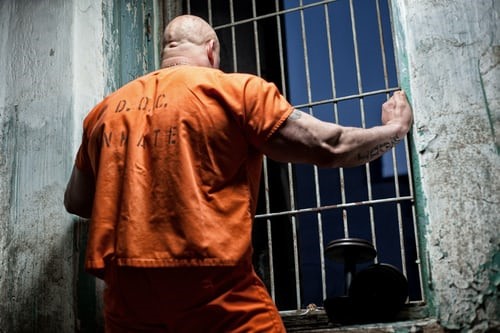
Conjugal Visits: A Typical Experience
Perhaps you’ve watched pretty similar practices in movies. But it’s entirely a different ball game in the real world. Besides that movies make the romantic visits seem like a trend presently, those in-prison sex scenes are not exactly what it is in reality.
How, then, does it work there? As mentioned, jurisdictions that still allow “extended family visits” may not grant the same to the following:
- Persons with questionable “prison behavior”
- Sex crime-related convicts
- Domestic violence convicts
- Convicts with a life sentence
Depending on the state, the visit duration lasts from one hour to up to 72 hours. Such visits can happen as frequently as once monthly, once a couple of months, or once in a year. The ‘meetings’ happen in small apartments, trailers, and related facilities designed specifically for the program.
In Connecticut, for example, the MacDougall-Walker correctional facility features structures designed to mimic typical home designs. For instance, the apartments each feature a living room with games, television, and DVD player. Over at Washington, only G-rated videos, that’s one considered suitable for general viewers, are allowed for family view in the conjugal facilities.
The kitchens are usually in good shape, and they permit both fresh and pre-cooked items. During an extended family visit in California, prisoners and their visitors are inspected at four-hour intervals, both night and day, till the visit ends.
Before the program was scrapped in New Mexico, correctional institutions filed-in inmates, and their visitors went through a thorough search. Following a stripped search, inmates were compelled to take a urine drug/alcohol test.
Better Understanding Conjugal Visits
Conjugal visits are designed to keep family ties.
New York’s term for the scheme – Family Reunion Program (FRP) – seems to explain its purpose better. For emphasis, the “R” means reunion, not reproduction, as the movies make it seem.
While sexual activities may be partly allowed, it’s primarily meant to bring a semblance of a typical family setting to inmates. Besides reunion, such schemes are designed to act as incentives to encourage inmates to be on their best behavior and comply with prison regulations.
Don’t Expect So Much Comf ort
As mentioned, an extended family visit happens in specially constructed cabins, trailers, or apartments. Too often, these spaces are half-occupied with supplies like soap, linens, condoms, etc. Such accommodations usually feature two bedrooms and a living room with basic games. While these provisions try to mimic a typical home, you shouldn’t expect so much comfort, and of course, remember your cell room is just across your entrance door.
Inmates Are Strip-Searched
Typically, prisoners are stripped in and out and often tested for drugs . In New York, for example, inmates who come out dirty on alcohol and drug tests get banned from the conjugal visit scheme for a year. While visitors are not stripped, they go through a metal detector.
Inmates Do Not Have All-time Privacy
The prison personnel carries out routine checks, during which everyone in the room comes out for count and search. Again, the officer may obstruct the visit when they need to administer medications as necessary.
Conjugal Visits FAQ
Are conjugal visits allowed in the federal prison system?
No, currently, extended family visits are recognized in only four states across the United States – Washington, New York, Connecticut, and California.
What are the eligibility criteria?
First, conjugal visits are only allowed in a medium or lesser-security correctional facility. While each state has unique rules, commonly, inmates apply for such visits. Prisoners with recent records of reoccurring infractions like swearing and fighting may be ineligible.
To qualify, inmates must undergo and pass screenings, as deemed appropriate by the prison authority. Again, for instance, California rules say only legally married prisoners’ requests are granted.
Are gay partners allowed for conjugal visits?
Yes, but it varies across states. California and New York allow same-sex partners on conjugal visits. However, couples must have proof of legal marriage.
Are conjugal visits only done in the US?
No, although the practice began in the US, Mississippi precisely, other countries have adopted similar practices. Saudi Arabia, Brazil, Venezuela, Colombia, and Canada, for example, are more lenient about extended family visits.
Brazil and Venezuela’s prison facilities, for example, allow weekly ‘rendezvous.’ In Columbia, such ‘visits’ are a routine, where as many as 3,500 women troop in weekly for intimacy with their spouses. However, Northern Ireland and Britain are entirely against any form of conjugal programs. Although Germany allows extended family visits, the protocols became unbearably tight after an inmate killed his supposed spouse during one of such visits in 2010.

Benefits of Conjugal Visits
Once a normal aspect of the prison system, conjugal visits and the moments that prisoners have with their families are now an indulgence to only a few prisoners in the system. Many prison officials cite huge costs and no indications of reduced recidivism rates among reasons for its prohibition.
Documentations , on the other hand, say conjugal visits dramatically curb recidivism and sexual assaults in prisons. As mentioned earlier, only four states allow conjugal visits. However, research shows that these social calls could prove beneficial to correctional services.
A review by social scientists at the Florida International University in 2012 concludes that conjugal visits have several advantages. One of such reveals that prisons that allowed conjugal visits had lower rape cases and sexual assaults than those where conjugal visits were proscribed. They deduced that sex crime in the prison system is a means of sexual gratification and not a crime of power. To reduce these offenses, they advocated for conjugal visitation across state systems.
Secondly, they determined that these visits serve as a means of continuity for couples with a spouse is in prison. Conjugal visits can strengthen family ties and improve marriage functionality since it helps to maintain the intimacy between husband and wife.
Also, it helps to induce positive attitudes in the inmates, aid the rehabilitation process, and enable the prisoner to function appropriately when reintroduced back to society. Similarly, they add that since it encourages the one-person-one partner practice, it’ll help decrease the spread of HIV. These FIU researchers recommend that more states should allow conjugal visits.
Another study by Yale students in 2012 corroborated the findings of the FIU researchers, and the research suggests that conjugal visits decrease sexual violence in prisons and induces ethical conduct in inmates who desire to spend time with their families.
Expectedly, those allowed to enjoy extended family visits are a lot happier. Besides, they tend to maintain the best behaviors within the facility so that they don’t ruin their chances of the next meeting.
Also, according to experts, visitations can drop the rate of repeat prisoners, thus making the prison system cost-effective for state administrators. An academic with the UCLA explained that if prisoners continue to keep in touch with their families, they live daily with the knowledge that life exists outside the prison walls, and they can look forward to it. Therefore, these family ties keep them in line with society’s laws. It can be viewed as a law-breaking deterrence initiative.
For emphasis, conjugal visits, better termed extended family visits, are more than for sex, as it seems. It’s about maintaining family ties, primarily. The fact is, away from the movies, spouse-alone visits are surprisingly low, if at all allowed by most states’ regulations. Extended family visits create healthy relationships between prisoners and the world outside the bars. It builds a healthy start-point for an effective reentry process, helping inmates feel hope for a good life outside jail .
Harassment and Cyberbullying as Crimes
What is a bench trial jury trial vs. bench trial, related articles.

History of the Freedom of Information Act

Ineffective Assistance of Counsel

Tort Law Definition & Examples

Bail vs Bond: What’s the Difference?
- What's the Deal with Conjugal Visits?
- Dumb Tropes We Learned in Films
- The Smuggle Is Real
- What Life Is Like When Awaiting Execution
- Things Ex-Cons Miss About Prison
- How Prisoners Use Makeup
- Actors Who Have Done Real Time
- Great TV Series About Life in Prison & Jail
- Celebs Whose Parents Were in Prison
- Things Felons Can't Do When Free
- Surprising Products Made by Prisoners
- The Scariest Prisons in World History
- The Prison Industrial Complex
- Norfolk Island, Australia's 18th C. Prison Colony
- Famous Books Penned in Prison
- Prison Guards Describe Things They've Witnessed
- History's Most Daring Prison Escapes
- Weird Things Transported into Prison
- The Scariest Prisons in America
- Inmates Describe Their Scariest Moments
- Intense Prison Riots
- The Reality of Solitary Confinement
- The Craziest Things Inmates Witnessed
- Disturbing Tales from Prison Guards
- What Prison Life Is Really Like
- Convicts Who Had Prison Weddings
- Books Prisoners May Not Read
- Famous Inmate Suicides
- The Last Meals of Executed Prisoners
- Inside Prisons Around the World
- Common Prison Tattoos Decoded
- History's Craftiest Prison Breaks
- Criminals Who Didn't Survive Prison
- Ways Inmates Waste Time in Prison
- Objects Turned into Prison Weapons
- Things for Sale at the Commissary
- The Fanciest Prisons in the World
- How Prisoners Use the Internet
- Notorious Prison Kingpins
- Ex-Cops Who Landed in Prison
- To Be Pregnant in Prison
- What Movies & TV Shows Get Wrong About Prison
- Different Jobs for Prison Inmates
- Real Classes Inmates Can Take
- Things You Can Use as Currency
- What It Was Like to Be a Prison Guard at Alcatraz
- Prisoner Codes and Secret Slang
- Tales from People Who Have Gone in Undercover
- The Paradox of So Many Awaiting Execution
- The History of Prison Uniforms
- The Weirdest Items Confiscated from Prisoners
- The Greatest Movies About Prison
- Rappers Who Have Been to Prison
- Great Movies About Prison Escapes
- Funny Movies About Prison
- The Scariest Jails in Movies
Everything You Need to Know About Conjugal Visits
Conjugal visits are among the most cliched tropes featured in TV and movies about prison. However, prison conjugal visits are extremely rare in the US, allowed in just four states. Beyond that, the rules for them are extremely strict, with extended family visits (as they're now called) allowed for only a select few prisoners with clean records.
With their pop culture presence, one imagines conjugal visits taking place in cramped trailers all over the country. But this isn't true - and never really was. From their racist origins, to their ban in federal prisons, to the limitations placed on them, conjugal visits are one of the most misunderstood aspects of life behind bars. They're allowed for inmates in jail and prison all over the world, from liberal Europe to theocratic Middle Eastern countries - and the rules for them vary from border to border.
The First Prison with Conjugal Visits Was a Mock Plantation
The first conjugal visits in American history were in Mississippi State Prison (aka Parchman Farm) in the early '20s. Like so much of American history, they have a racist connotation. The prison's warden, James Parchman, wanted to encourage his African-American male prisoners to work harder, so he turned the prison into a huge faux-plantation.
Because he also thought Black men were animalistic sex monsters, Parchman paid prostitutes to come and have sex with the inmates each Sunday. In the 1930s, Parchman Farm began letting white male prisoners engage in the program, and it was formalized as a "spousal visit time" in 1960.
Only Four States Still Allow Conjugal Visits
They're not really called "conjugal visits" anymore, prisoners have no constitutional right to family visits, convicts on the verge of release get the longest visits, where family visits are allowed, they're kinda nice, not just anyone can go on a conjugal visit, even without conjugal visits, inmates still get it on with spouses, the us is far from the only country with conjugal visits, saudi arabia really goes all out for conjugal visits.
In the US, the few states that still allow sexual encounters for prisoners do so in small trailers, with little glamour. But in Saudi Arabia, it's a different story. M ale inmates in high-security prisons, usually terror suspects the government is trying to use as informants, get one conjugal visit each month - for each spouse they have. Beyond that, the Saudi government provides inmates' families with money for housing, food, and education, and they pay for the travel expenses incurred by inmates’ family members. But wait, there's more! If a prisoner wants to attend a family occasion, like a wedding or funeral, he's given up to $2,600 to give as a gift .
Crimes Occasionally Happen During Conjugal Visits
Same-sex couples aren't left out, conjugal visits reduce prison rape, visits have been ended for a variety of reasons.
First comes trial, then comes guilty, then comes sentencing to years locked away with people even more dangerous than you are. Join us on a whirlwind tour of prison!
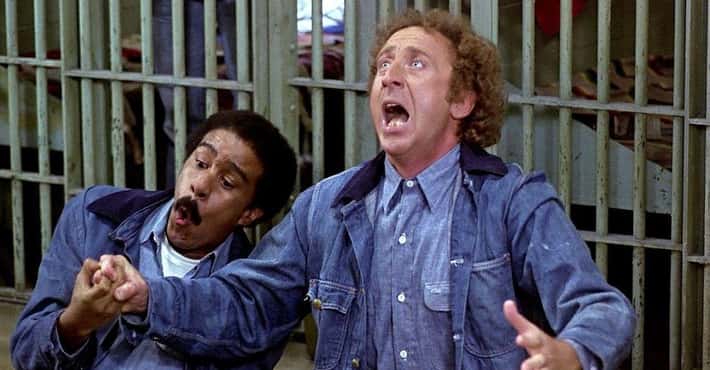

Murder in the Heartland

Middle American residents hold the clues to solve the murder in their town.
Watch Free Seasons and Series
On the case with paula zahn, see no evil, bride killa, i married a mobster, deadline: crime with tamron hall, homicide hunter: lt. joe kenda, til death do us part, jared from subway: catching a monster, the hillside strangler: mind of a monster, twisted sisters, the playboy murders, unusual suspects, trending on id, crimes gone viral, mean girl murders, evil lives here, in pursuit with john walsh, people magazine investigates, new episodes.
S5 E1 Road Trip Killer
S9 E8 Money is a Motive
S5 E2 Hazards on the Clock
S5 E1 Mama Bears Don’t Play
S2 E7 Under the Influence
People Magazine Investigates: Surviving A Serial Kil…
S1 E1 Surviving Dating Game Killer
S9 E7 Family or Feud
S8 E10 Tunnel Vision
Lethally Blonde
S1 E6 A Model Murder
S2 E6 Battle of the Beach Bodies
It's All Relative
Matriarch of murder, gypsy's revenge, casey anthony: an american murder mystery, wives with knives, who the (bleep) did i marry, the curious case of natalia grace, the wives did it, menendez brothers: misjudged, continue watching, my episodes, link your tv provider to unlock thousands of episodes from the discovery family of networks..
Network availability may vary with your TV package.

Do Not Sell or Share My Personal Information
For california, colorado, connecticut, virginia and utah residents only, allow sale, sharing or use of my personal information for targeted advertising.
If you switch this toggle to “no,” we will not sell or share your personal information with third parties for advertising targeted to this browser/device. Please see our Opt-Out Form for additional preferences.
Global Privacy Control (GPC)
When a GPC signal is not detected, we sell and share your personal information unless you toggle "no" above.
Cookie List
- Win $500 Gift Card
- NURSES: Nominate a Nurse
- We Are Buffalo Jobs
- Work For WBLK
- Community Cornerstone
- World's Largest Yard Sale
- We Are Buffalo DEALS
- Home Grown Heat

Are Conjugal Visits Legal In New York State Prisons?
- Share on Facebook
- Share on Twitter
Are incarcerated individuals in New York State correctional facilities allowed to have conjugal visits? Across New York, there are 44 state-run prisons. These prisons have a variety of programs for inmates, including Canine Training Programs, Adult Basic Education, Furniture Manufacturing, Horse Handling and Care, and more. These programs are designed to provide prisoners with educational opportunities, rewards, jobs, therapy, and more. But what about what is commonly known as 'conjugal visits'?
According to Wikipedia ,
A conjugal visit is a scheduled period in which an inmate of a prison or jail is permitted to spend several hours or days in private with a visitor. The visitor is usually their legal spouse, and the visit's purpose is usually sexual activity.
Does New York State Allow Incarcerated Individuals To Have Conjugal Visits?
New York is one of five states that offer conjugal visits - New York, Mississippi, California, South Carolina, and Minnesota. Conjugal visits are permitted through the state's Family Reunion Program. According to the NY Department of Corrections and Community Supervision, the goals of the program are,
Preserving and strengthening family ties that have been disrupted as a result of incarceration.
Fostering positive and responsible conduct.
Facilitating post-release reintegration into the family and community, thereby reducing the likelihood of recidivism.
Which Prisoners Are Eligible For Conjugal Visits In New York?
Inmates must be eligible to qualify for the program. One of the major requirements is the have good behavior before and during the application process. Permitted visitors include:
- Legal spouses - Children of the participant, including minor children of the incarcerated individual - Parents or step-parents - Grandparents - Foster parents/guardians
Legal spouses are allowed to have conjugal visits while the other family members can enjoy extended visits. Other relatives, such as nieces and nephews can potentially visit but are subject to special review first.
Conjugal and family reunion visits are allowed at the following correctional facilities:
Adirondack Albion Attica Auburn Bedford Hills Clinton Collins Eastern Elmira Fishkill Great Meadow Green Haven Otisville Shawangunk Sing Sing Sullivan Taconic Ulster Wallkill Washington Wende Woodbourne Wyoming
You can find out more info about the program here .

These 7 Prisons Are The Most Violent In New York State
"The number of unusual incidents has increased 132% from 5,980 in 2011 to 13,870 in 2020. These higher incident numbers were largely due to increases in assaults on incarcerated individuals (+81%), assaults on staff (+86%), contraband (+130%), disruptive behavior (+372%), and staff use of weapons (+1,035%)."
Gallery Credit: Yasmin Young
Top 5 Worst, Most Problematic Prisons in New York
More from 93.7 wblk.


COMMENTS
DOC 450.300 Visits for Incarcerated Individuals is applicable to all types of prison visits. Please note visitors whom are 18 years of age and older must present a valid, current photo identification at the time of the visit (i.e., driver's license or state issued identification card, international visitors must present their passport).
In 1993, 17 states had conjugal visitation programs. By the 2000s, that number was down to six, with only California, Connecticut, Mississippi, New Mexico, New York, and Washington allowing such visits. And by 2015, Mississippi and New Mexico eliminated their programs. For the most part, states no longer refer to "conjugal" visits.
The United States Federal Bureau of Prisons does not allow conjugal visits for prisoners in federal custody according to Wikipedia.com. Washington is one of only four states that allow conjugal visits along with New York, California, and Connecticut at the state level of prisons. One thing that has changed in Washington State, is conjugal ...
Visitation opportunities in Prisons will be provided for in-person, video, and/or no contact options appropriate for various circumstances based on eligibility and safety for those participating. Individuals housed in maximum custody may receive visits per DOC 320.255 Restrictive Housing. Video visit opportunities may be authorized in Prisons ...
As stated here, the states that allow conjugal visits are: California. Connecticut. New York. Washington. Even in states where conjugal visits are allowed, not all prisons offer them. Prisoners must meet specific criteria before participating in a conjugal visit program. There are also rules that vary by the state and the prison itself.
Similar to Washington State, extended visits can be canceled at any time, and individuals can lose their eligibility within the program, subject to the discretion of the facility. ... Does Participation in Conjugal Visitations Reduce Prison Violence in Mississippi? An Exploratory Study. Criminal Justice Review, 27(1), 52-65. https://doi.org ...
The first step in visiting an inmate in Washington is to fill out an inmate visitors application online. Minors, or anyone under the age of 18 must be on the inmates approved visitors list, be accompanied during their entire visit by a designated escort or parent/legal guardian, a copy of their original birth certificate must be attached to the ...
Conjugal visits were first allowed as incentives for the forced labor of incarcerated Black men, the practice expanding from there. ... Writing about San Quentin State Prison in California in the early ... Connecticut, Washington and New York—allow conjugal visits. (Mississippi, where Parchman is located, ended conjugal visitation in 2014 ...
A conjugal visit is a scheduled period in which an inmate of a prison or jail is permitted to spend several hours or days in private with a visitor. The visitor is usually their legal spouse. The generally recognized basis for permitting such visits in modern times is to preserve family bonds and increase the chances of success for a prisoner's eventual return to ordinary life after release ...
In the eyes of the law, conjugal visits are a privilege, not a right. The Supreme Court has repeatedly upheld prison administrators' latitude to limit prisoners' rights, including visitation ...
There are only four U.S. states that currently allow conjugal visits, often called "extended" or "family" visits: California, Connecticut, New York, and Washington. Some people say Connecticut's program doesn't count though, when it comes to conjugals—and the Connecticut Department of Corrections agrees. Their family visit program is ...
The FIU study was conducted over a three-year period. from 2004 to 2006, in the states that allowed prisoners conjugal visits at the lime: California, Mississippi, New Mexico, New York and Washington. While sexual violence occurred in states that prohibit conjugal visits at a rate of 226 per 100,000 prisoners, it occurred nearly five times less ...
Last April, New Mexico became the latest state to cancel conjugal visits for prisoners after a local television station revealed that a convicted killer, Michael Guzman, had fathered four children with several different wives while in prison. Mississippi had made a similar decision in January 2014. A Stay at the "Boneyard".
A conjugal visit is a popular practice that allows inmates to spend time alone with their loved one (s), particularly a significant other, while incarcerated. By implication, and candidly, conjugal visits afford prisoners an opportunity to, among other things, engage their significant other sexually. However, in actual content, such visits go ...
The general guidelines that are applicable to all prison facilities is detailed in DOC Policy 450.300 Visits for Incarcerated Individuals (pdf). WCCW also has its own Visitor's Guidelines (pdf) detailing important notices, visiting rules, guidelines for all visits (prison and video), and regular visiting hours for each housing unit.
Washington and Connecticut. Connecticut and Washington have similar programs within their prison systems, referring to conjugal visits as extended family visits. Of course, the focus has been to take the stigma away from conjugal visits as a means of procreation, a short time, and a privilege as a result of good behavior.
Only Four States Still Allow Conjugal Visits. Conjugal visits for the express purposes of sex or family time occur only in state prisons, not federal prisons. In the early 1990s, 17 states still had active conjugal visit programs. But that number has decreased, and now only California, New York, Connecticut, and Washington still allow conjugal ...
Conjugal visits are usually only allowed in medium security or lower prisons, and are now allowed for prisoners convicted of sexual assaults. But each state has its own rules: Only New York and California, for example, allow same-sex conjugal visits. And in Connecticut, according to Thrillist, a spouse or partner is required to visit with the ...
Legal spouses are allowed to have conjugal visits while the other family members can enjoy extended visits. Other relatives, such as nieces and nephews can potentially visit but are subject to special review first. Conjugal and family reunion visits are allowed at the following correctional facilities: Adirondack. Albion.
Eligibility Requirements. Per DOC 590.200 Marriages & State Registered Domestic Partnerships, the following requirements must be met for an incarcerated individual to be eligible. Incarcerated individuals must be under Department jurisdiction for one year before beginning the marriage/state registered domestic partnership application process.